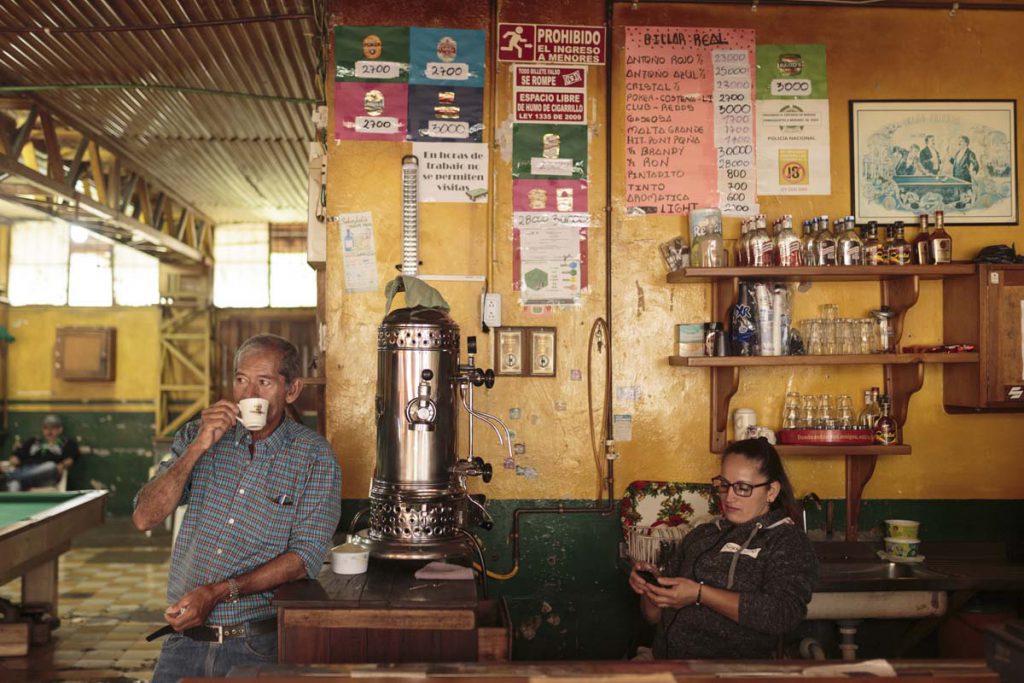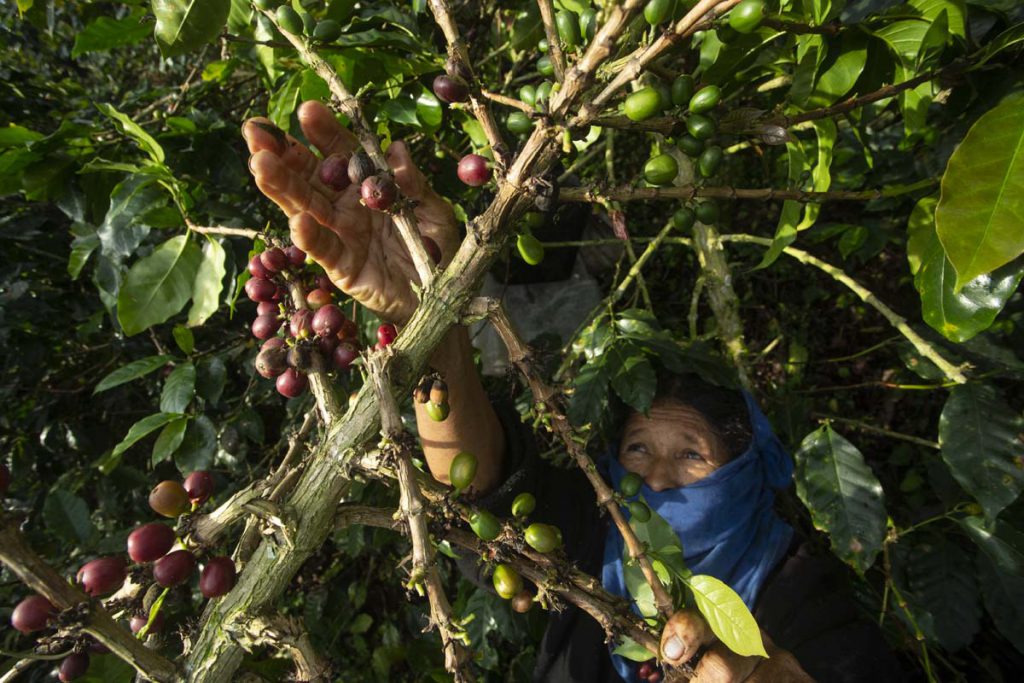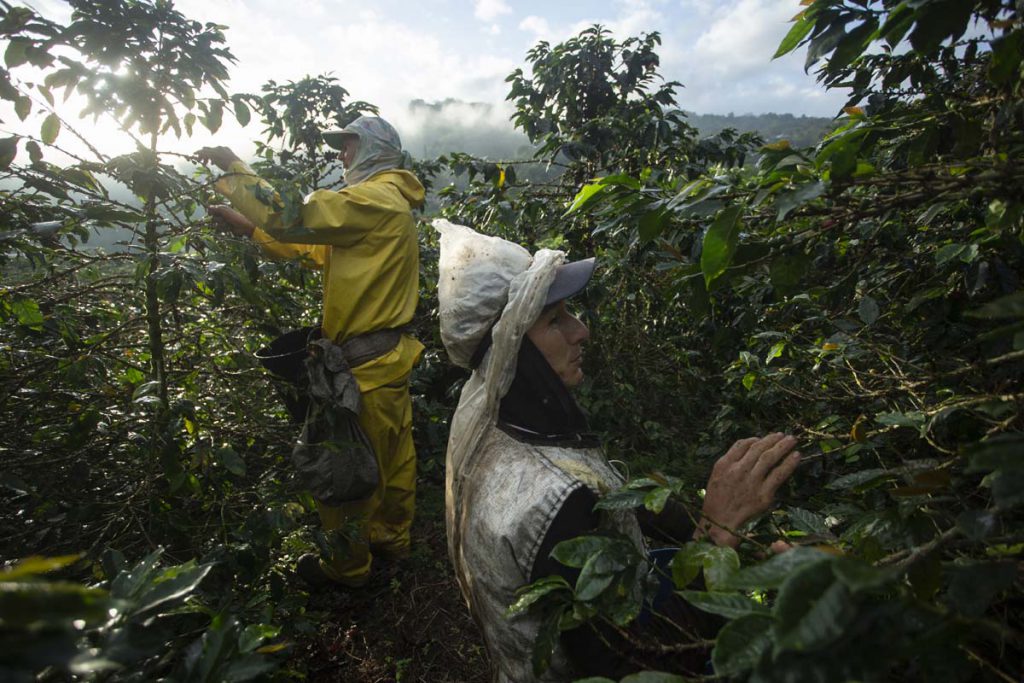Colombia’s Cafeteritos - 25 Magazine, Issue 10
It’s no secret that young people living in Marsella Risaralda have migrated to other cities in search of better opportunities – if coffee farming doesn’t provide guarantees of economic stability for small producers, coffee picking certainly won’t.
Photographer JUAN PÁEZ asks: With so many of the younger generation seeking job opportunities and education elsewhere, is it possible to preserve Colombia’s coffee culture?
Since 2011, Marsella Risaralda has been a part of the UNESCO-protected Colombian Coffee Cultural Landscape, made up of six sites with eighteen urban settlements inthe central part of the Andes mountain range. A result of Antioquian settlers’ adaptation to the area in the nineteenth century, the region is marked by geographic features as well as a local architectural typography. In Marsella, coffee is not just a part of the physical landscape, but deeply rooted in the region’s cultural traditions. Coffee is present in Marsella’s architecture; it impacts the way the community gathers and celebrates. It’s in its food, its music.
But a cultural gap looms: the high costs of coffee production, a fall in the international market price, labor scarcities, and the impacts of climate change are pushing young people to look for better opportunities elsewhere. And why not? What does the local community stand to gain by preserving – alongside deeply rooted cultural traditions – a tradition of economic instability?
The billiard halls in Marsella are places of conversation where fresh coffee is never lacking. The town consumes an average of five cups of coffee per person per day. Juan Páez.
The “jeepaos” are public transport to reach the most difficult corners of the surrounding coffee landscape. “The curling mountains and stone paths make it difficult to move people and coffee,” says Juan.
A picker walks the path through La Piscina (“The Pool”), the closest estate to Marsella. Its size and proximity to the town mean that many pickers like to work here.
A child runs through the courtyard of the huge House of Marsella Culture to their band class. The building, which also houses a museum of Paisa culture, is a prime example of the local architectural typography, a fusion between Spanish cultural patterns and indigenous culture of the region adapted specifically for coffee production.
Maria Ángel Londoño, “Panchita,” has picked coffee for 75 of her 80 years. “She never had an education because her father was very conservative and demanded that daughters never intervene in society,” says Juan. She doesn’t think picking coffee is a good way to live, so she made sure her daughters received an education so that they wouldn’t need to “live what she had to live.”
Coffee pickers start their workday from 5am, even when the sun hasn’t yet risen. An average adult picker will collect 80–100 kg a day, but the most skilled aim to collect more than 200 kg of cherry daily. Young pickers only reach 40–50 kg. For this, pickers will earn €49 (US$55) a week.
Noelba Garcia (55) and her daughter Manuela (14) pose for a portrait together. “Noelba tells me that the best thing she can teach Manuela is the ability to survive any adversity,” says Juan. When coffee prices fell in 2018, Noelba – a coffee picker – had to take on additional work in hotels and made chorizos (which sold well) to bolster her income. Despite this, her monthly salary doesn’t exceed €180 (US$200). Manuela is studying at an agricultural school, but she doesn’t enjoy working in the field. She doesn’t feel like she’s a part of the coffee community.
Julián Rosas teaches other children from Marsella’s troubled areas how to brew filter coffee, a skill he learned in the “Cafeteritos de Marsella” program of the Marsella Juega y Educa Foundation. Created by Spanish architect Javier Sánchez, the program encourages young people to explore and adopt the local coffee culture through games and science. Many of the program’s attendees dream of having their own business one day.
Salomé López and Sofia Cortés are beneficiaries of the Marsella Juega y Educa Foundation, supported by coffee growers in the region. In the first year after its founding, the soccer school (Sonreír No Cuesta Nada, “Smiles are Free”) was first runner-up in the national championship.
JUAN PÁEZ is a freelance photographer based in Bogotá, Colombia. See more of his work on Instagram at @juanpaez83.
Are you an SCA Member? Claim your complimentary subscription to the print version of 25 Magazine in English at sca.coffee/signmeup.
Not a member? Join now and support the mission of our non-profit trade association at sca.coffee/join.










